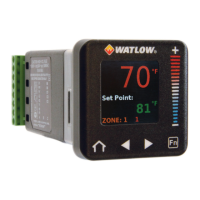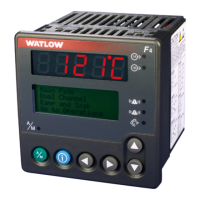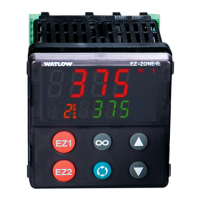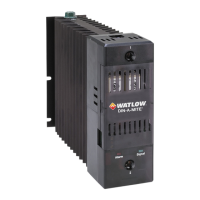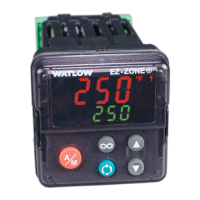Introduction to Data Communications, Chapter 1 Data Communications with the Watlow Series 988 Family
1.3
Interfaces
0V
1 bit
0 bit
-12V
+12V
Bit signals on an RS-232 interface.
+5V
0V
-5V
1 bit
1 bit
+5V
0V
-5V
0 bit
Bit signals on an RS-422 interface.
Bit signals on an EIA-485 interface.
Figure 1.3 - Interface
bit signals.
An EIA-485 interface uses three wires: a T+/R+; a T-/R-; and a common line. A -5-
volt signal is interpreted as a 1, a +5-volt signal as a 0. Up to 32 remote devices
can be connected to a master on a multi-drop network up to 4,000 feet long.
The RS-422 interface uses five wires: a "talk" pair; a "listen" pair; and a common
line. It can handle one master and up to ten remote devices in a multidrop network
up to 4,000 feet long. RS-422 uses the difference in voltage between the two wires
to indicate a 1 or a 0 bit. A 1 is a difference of +5 volts, while a 0 is a difference of
-5 volts.
Of these three interfaces, EIA-485 has the lowest impedance, a multiple-device
capability, greatest noise immunity and the longest distance capability — up to
4,000 feet of total network cable length.
RS-232, EIA-485 and RS-422 Interfaces
The three interfaces we're concerned with on this controller are RS-232, EIA-485
and RS-422.
An RS-232 interface uses three wires: a single transmit wire; a single receive wire;
and a common line. Only two devices can use an RS-232 interface. A -12 volt
signal indicates a 1 and a +12 volt signal indicates a 0. The RS-232 signal is
referenced to the common line rather than to a separate wire, as in EIA-485 and
RS-422. An RS-232 cable is limited to 50 feet, due to noise susceptibility.
0 bit
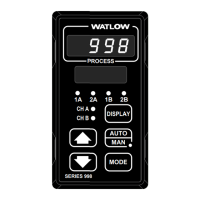
